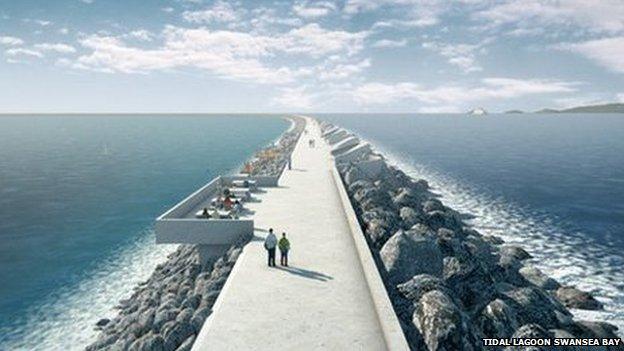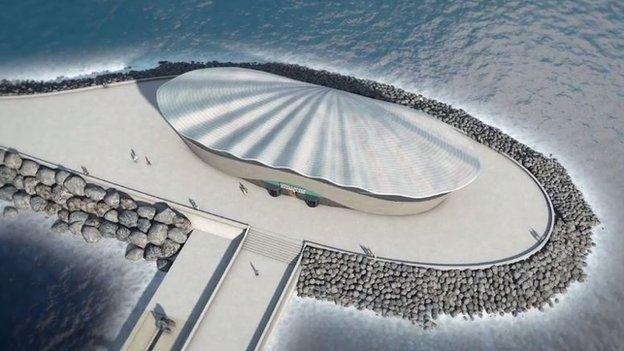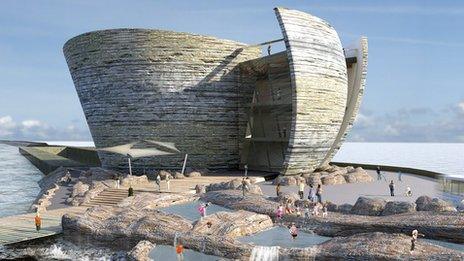£300m deal for Swansea Bay tidal lagoon wall
- Published
Prime Minister David Cameron said the deal was a "win-win" for both countries
A £300m deal to build the six-mile wall for the world's first tidal lagoon power plant in Swansea Bay has been awarded to a company from China.
China Harbour Engineering Company will open a base in the UK and spend half of the contract's value on a British workforce, partners and supply chain.
Prime Minister David Cameron said the deal was "win-win" for both countries.
About 1,850 construction jobs could be created by the £1bn lagoon project, which could operate from 2018.
Mark Shorrock, chief executive of Tidal Lagoon Power, said: "I have worked in China, speak Chinese and have huge esteem for China's delivery capability and ability to deliver projects to time and budget."
The two firms could also work together for the development of similar projects in Asia.
Speaking during Prime Minister's Questions on Wednesday, Mr Cameron added: "It's [Swansea Bay] subject to a planning decision, but I think tidal power does have significant potential.
"I've seen some of the plans for myself and I hope this is something we can make progress on and obviously attracting investment into the country to help make it happen is a win-win for both countries."
The deal could also lead to further investment with China Harbour Engineering Company - one of the world's largest specialist marine engineering contractors and investors - looking at growing its presence in the UK and Europe over the next decade.
Its president, Lin Yi Chong, said Swansea Bay Tidal Lagoon was a "pioneering scheme that could bring the world a new energy option, as the cornerstone project in our business development strategy in the UK and wider Europe".

Swansea Bay tidal lagoon facts

A six-mile long seawall would house underwater turbines
It will be the world's first tidal lagoon power plant
A design life of 120 years
When fully operational, it is expected to generate 500GWH of electricity every year - enough to power more than 155,000 homes

- Published26 May 2015

- Published7 February 2014

- Published6 February 2015
